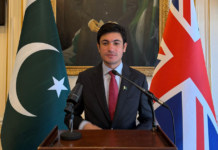Pakistan is the world’s fifth-most populous country with a population exceeding 212.2 million and has the world’s second-largest Muslim population. Since its inception, the country has seen the escalation of instability, insecurity, and political turmoil, and unprecedented manmade and natural disasters.
However, much work has been done in the field of science, economic, technology, and other sectors required for a state in international comity and steer its population towards progress, development, and prosperity.
All of us know the fact that no nation can claim to be sovereign and independent unless its population is educated and literate. The only way to get success and glory is to get its individual to educate.
Keeping in view the overall education scope in our country its goal is to stem toward attempting to make education accessible for all to increase the literacy ratio among the population. The government in its own capacity or with help of donor organizations has made pragmatic efforts to provide equal access to every child to get at least primary school in the country. Moreover, during the last so many decades a large number of educational institutes both public and private allowed a majority of students to complete their education with help of scholarships.
Additionally, there are certain community organizations and individuals which playing a key role to make the education system strengthen and utilize it as an instrument in eradicating poverty and enable people to live their lives in a better way.
The mushroom growth of schools, colleges, and universities under the investment of private and government investment across Pakistan has produced a large cohort of graduates. This trend has relatively impacted the holistic job markets as observed by national statistics that thousands of applicants are received for low-salary jobs in government sectors.
The most devastating thing among this trend is the government seen inaction to mainstream its education system with an open job market through a sustainable planning and development.
In the face of oversupply of educated unemployed, the successive governments in the country have failed to divert their focus toward the lackluster economy and other sectors to generate opportunities for fresh graduates.
A bird’s eye of urban and rural setup gives us a clear picture where a large number of people, mostly young, actively looking for work but futile. The number of job seekers in the country is increasing with each passing year; additionally, the government power to absorb this influx has been exhausted owing to its non-holistic policies in the job market.
This article further added Industrial expansion for instance to clear the picture of growth in support. However, the industry is a good source, especially for producing goods and services and proving jobs to a large number of people, which is why the government promotes such expansions and new startups. But, owing to the current lack of power supply and electricity, as well as the catastrophic conditions caused by COVID-19, a substantial portion of the factories and enterprises have been closed, and as a result, a large number of labor forces have been flushed away.
The aim of this article is not to criticize the rate of growth in any field, but to draw the attention of the government/policymakers to the fact that, while growth is a good indicator for a developed nation, it contradicts in Pakistan. Obtaining stakeholder support for the transformation of the entire planning policies model in order to transition with scheme acceptance to a more “holistic and streamlined strategy” that includes anything from need assessment to policy formulation and some meaningful provisions on this front are needed.




